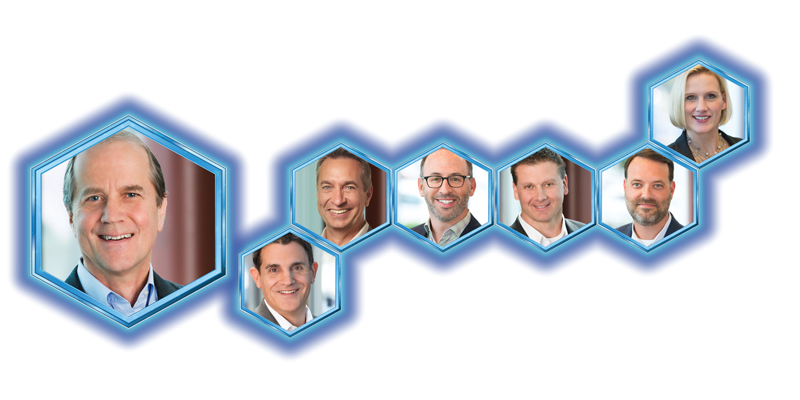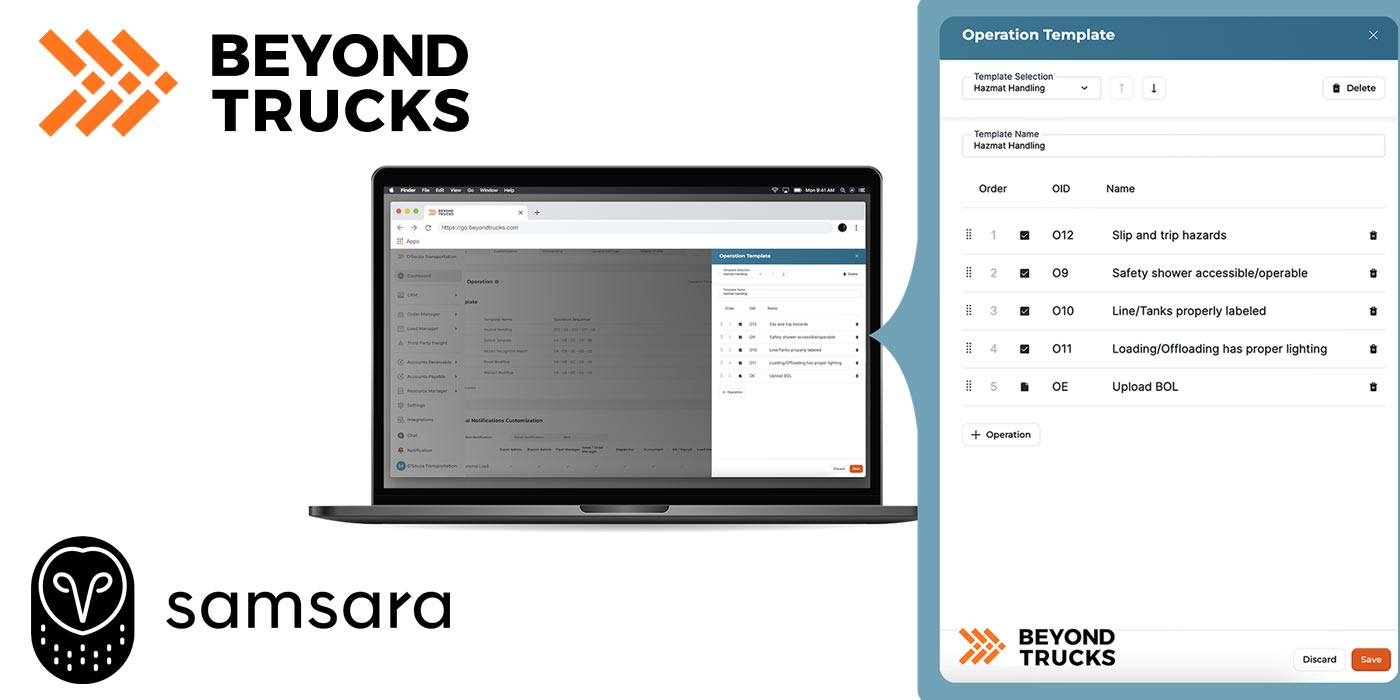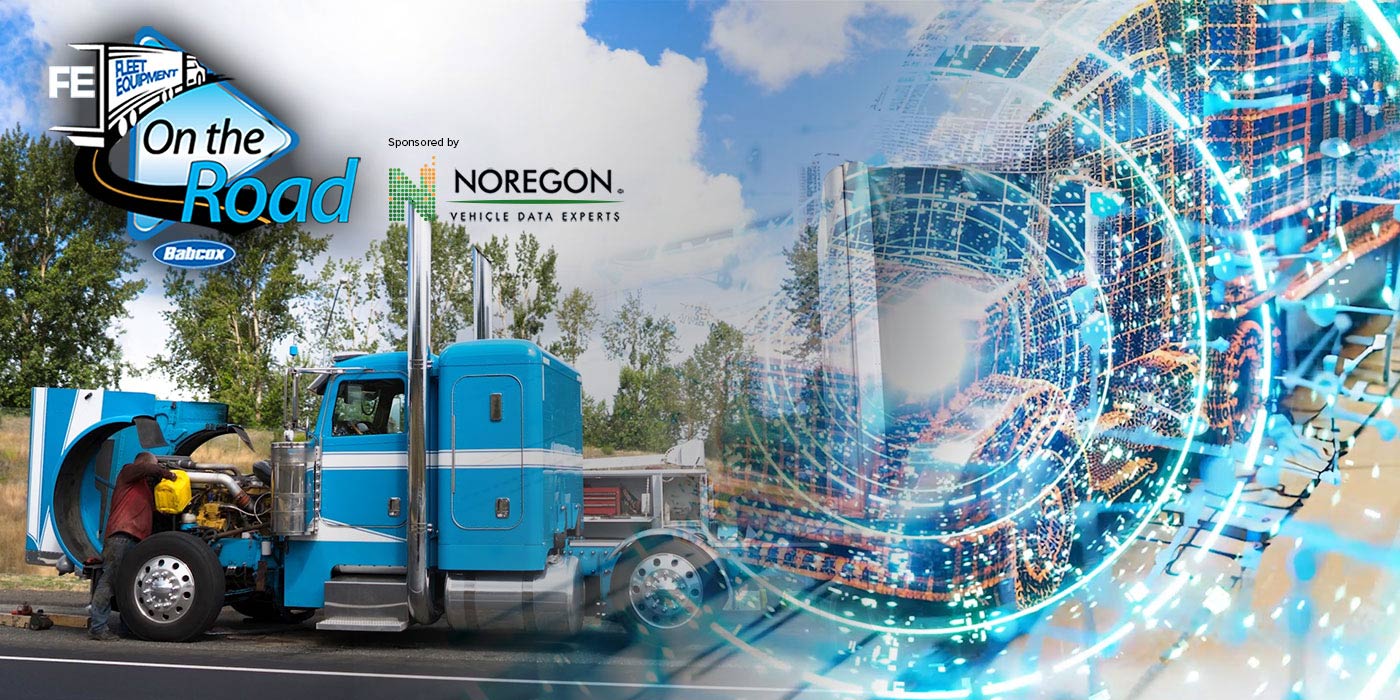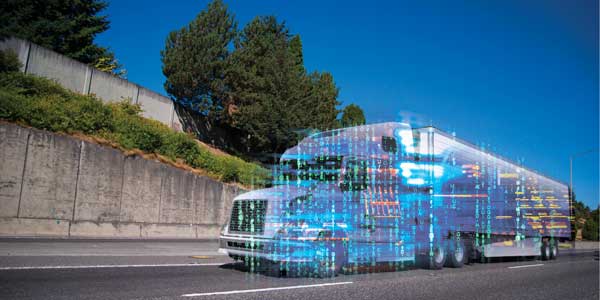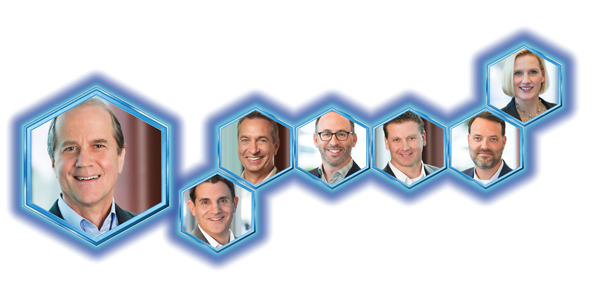
[Editor’s note: After this story was published, Tom Fansler was appointed as chief technology and data officer for Trimble, and James Langley was appointed the senior vice president of Transportation, serving in the same capacity that Tom served when this story was written. The announcement was made during Trimble’s in.sight conference on Sept. 16. Their titles remain as they were when this story was originally published in print to maintain their respective views.]
Thomas Fansler, president of Trimble Transportation, sits across from you at a large boardroom table in the Trimble Minnetonka, Minn., office, and he’s ready to answer the tough questions.
- How can you help me integrate my data sources?
- What are you doing to ensure data privacy?
- How can I get others in my fleet to use data-driven tools?
- What do I need to know about artificial intelligence?
But Thomas isn’t alone. He has brought his team of strategy experts from all walks of Trimble, and they’re ready to talk transparently about their continued role in Trimble’s evolution. And evolved it has. After Trimble acquired PeopleNet in 2011, and TMW Systems and supply chain visibility provider 10-4 in 2012, all of those brand names were recently transitioned to, simply, Trimble. It was a move that went beyond marketing and symbolized the integration of Trimble’s services, data
“It’s going well,” Thomas says. “To do those things you have to have the right people in the right seats. There are always bumps in the road, but I think you’ll get a sense from your discussion just how skilled and passionate the team is.”
With introductions out of the way, it’s time to get down to business. You’re hopeful that you’ll find answers here, as other conversations about truck technology have led to more questions. You take a deep breath and ask your first one.
I know PeopleNet and I know TMW Systems, but what does it mean to me now that it’s all one Trimble?
Thomas doesn’t miss a beat.
“We’re really unique in the transportation industry in that we’re probably four or five years into what I call integrated data execution—meaning the Trimble platform as a service, which today has about 400,000 telematics units on the road,” he explains. He’s clear and concise as he works through the process of bringing all of Trimble’s data—on the road with the former PeopleNet, in the shops with the former TMW Systems and complete supply chain visibility with 10-4.
“What that platform does,” he continues, “is it allows any device that has a Trimble ID to recognize any other device at any other company or any other division. So you can have a single pane of glass—a single view horizontally across your business.”
It’s a move toward getting all of your fleet’s operational data all in one place.
“That’s one of the key pillars of the Transportation ecosystem,” adds Mark Botticelli, Trimble Transportation’s chief technology officer. “We want to become easier to do business with. When we were different brands, you weren’t getting the benefit of that data being coalesced. And what value can you get from that?
“Now we are providing a single-entry point to our applications and APIs, unified data governance, consistent data contracts, consistent security protocols, as well as consistent data sharing and control.”
How concerned do I need to be about data security and privacy?
All the media hype around data privacy is scary, but is there
“Let’s say I’m a carrier and I have a
You start thinking about all the ways you share data that you know of and maybe some of the ways you’re probably not aware of. It gets scary quickly.
So how do I protect my data?
Every telematics and data-driven solutions provider is going to have their own answer. For Trimble, Mark points to the newly-unveiled Transportation Ecosystem and Trust Center.
“We’re going to be the single connection for a carrier with the ability to control what data goes to a particular visibility provider,” Mark says, explaining that any client, customer or solutions provider that needs to integrate with a Trimble system will have to meet a base level of integration standards. “At the same time, we’re providing secure connections, the control you need and making sure that any data that is used for other things is anonymized and protected.”
That way you can start to control when a visibility provider might be collecting information. Turn on the flow of data when a carrier picks up a shipper’s load and then shut it off once it’s delivered to ensure that they’re not collecting your operational data—especially if the carrier is no longer hauling for that shipper.
We’re working through our own data policies, and it’s a challenge. How can I get everyone on the same page?
For example, you might be interested in outward-facing in-cab
Jon Passman, Trimble Transportation chief product and marketing officer, nods in agreement.
“I think that’s the whole thing with technology in general—there’s concern about it at first, and then you use it and you start to understand its benefits,” he says. “We have a really strong video product and a major focus of our business is to help the fleets understand the benefits of that solution.”
You’re battling the driver shortage on a daily basis. Marrying video data to the safety alerts your telematics platform is generating would be a huge benefit in giving the incident context, informing your driver training process and potentially protecting yourself in a litigation situation. But you risk potentially alienating drivers by installing cameras in your trucks.
“I’ve sat with customers and we’ve watched a video demo in which we saw an accident happen. If the video wasn’t there, the liability that they would be subject to… well, it sells itself,” Jon says. “Now, it’s still a big capital investment for you. So my job as the chief product and marketing officer is answering the question: How do we make it an easier buying decision? You see the financial benefit, but there are benefits for the driver as well. Putting
The irony of the video conversation is that everyone has a cellphone with a camera. The phone alone provides access to images, location data, voice data (who hasn’t felt like the microphone was listening when it shouldn’t be?) and website behavior—so why are you singled out as Big Brother when you talk about installing cameras in the trucks?
“Think about it,” Jon says, “Ten years ago, drivers pushed back on in-cab messaging. ‘I want to be out here driving, it’s my own private office.’ There is a need for change management with drivers. They are a different and awesome breed of employee.”
Definitely. We pay a lot of attention to our drivers’ needs. We want our drivers to be connected, but not distracted, and we need them to use it.
“Drivers aren’t the
“For the drivers specifically, we are investing in a next-generation mobile platform, which is the culmination of our efforts to reimagine the driver experience; a modern, easy-to-use experience that we have all become accustomed to based on smartphone use. In addition, it will allow fleets to leverage modern mobile technology without shouldering the burden of
Sometimes, I think that I’m the only one who remembers a time before all of this technology when all we used to do was run trucks.
James Langley doesn’t mince words. He’s ready to solve problems with the latest solutions technology can offer because he’s been in your seat. His business card now says Trimble Transportation general manager, enterprise, but you may remember him as the president of Dart Transit Co.
“Before that, I used to work for the vice president of fleet operations at a large operation, and he said to me, ‘James, man, if I had to do it all over again, I wouldn’t have any of this stuff. I’d just run trucks.’ His point was simply: Why do I have to be an expert in maintenance and an expert in back office and finance and accounting? What we’re trying to do at Trimble is help fleets maximize resource utilization.
“I had a
He hits the nail on the head.
“So software support and service-oriented architecture—all of those things—it makes sense to hand it over to the experts in technology; let me be the expert in transportation.”
That’s the idea behind the recently-announced cloud-hosted versions of TMW
“I’ll let Scott speak to that,” James says. “He owns the maintenance platform responsibility.
“Over the last three years, I was really focused on the maintenance solution to get the web solution in our customer’s hands,” explains Scott Vanselous, executive vice president of the supply chain for Trimble Transportation. “With James taking the lead on our enterprise business and Thomas putting the focus on innovation, we’re working hard on new solutions to improve our customers’ businesses.”
ServiceConnect is a big piece of the innovation development going forward. Trimble’s TMT ServiceConnect module enables fleet shops using Trimble’s TMT Fleet Maintenance software to be connected to more than 4,500 medium- and heavy-duty service locations, including many OEM dealers, throughout North America. That number could make your head spin. But then Scott dives into the data-driven insights that the platform provides and the vision for improving your shop’s throughput comes into focus.
“Service Connect gives us the status of the equipment when the job is in
“The system isn’t saying, ‘If you did this, this will change your costs,’ but it’s saying, ‘Here’s where your costs are out of line.’”
That makes so much sense. It seems like the entire industry is talking about predictive this or that, but you still like calling the shots. You definitely want all the information you can glean to make your decision, but, as the fleet manager, it’s still your neck on the line. You want to be certain you feel good about the decision and have the power to make it. But that brings up another interesting set of questions.
What about artificial intelligence and predictive solutions? Are those a reality or a marketing line?
Thomas explains that artificial intelligence is being developed and deployed today. It’s driven by machine learning—probability models are developed by crunching massive amounts of data through complex algorithms that create statistical predictors.
“The big transformation that will come from Machine Learning and AI is the ability to improve decision-making around really complex problems,” Thomas says. He points to one example: The power to load matching problem.
“Fundamentally, carriers want to maximize the utilization of their assets,” he says. In order to do so, he explains that they need to consider many factors, including:
- Drivers (pay, home time, retention risk, driver qualifications, etc.);
- Assets (vehicle proximity, vehicle health, availability); and
- Customer (delivery window, special requirements, contract commitments).
“When you apply machine learning,” he continues, “you create a forward-looking view on asset and driver factors that allows you to provide the load planner with a set of optimized choices. That ties back to our theme of delivering the right insights to the right people at the right time in order to inform their decision-making process and drive better business outcomes.”
That makes sense in theory, but is there a simpler explanation for how I’d use it?
“We do predictive fault guidance,” Thomas says. “Some out-of-service, red-line faults don’t happen very often. You can’t build predictions based on rare events without an enormous amount of data. When Trimble has several hundred thousand assets in a database, that event that might be one in 50,000 every six months.
“But Trimble might have eight or 10 of those now. We’re in a unique position to find and predict the faults that will literally take the truck right out of service based on our massive volume of data. That is one example.”
It sounds like a powerful tool, but it’s also overwhelming. How do I even start?
“If there was one thing I would say about the world we live in today for any company,” Thomas says, “it starts with the data strategy. It’s the No. 1 thing.
“A lot of the things we’re talking about at a macro level within Trimble actually started 10 years ago. So we’ve been planning for it. I think we are doing a much better job when we bring the organization together and ask: What important problems do our customers need us to solve?
“I love the possibility of solving complex problems to help our customers win,” he says. “What gets me up in the morning is that Trimble has a fundamental alignment—we are a customer-facing organization that’s going to solve these big market-facing problems. And I see us executing on that.”

